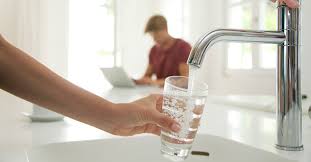Water is one of the most important things in life. It’s not just for drinking, but it also touches every other aspect of our lives– from cooking and cleaning to washing dishes and brushing your teeth. So, it’s no surprise that we’re attentive to its quality: if it tastes bad or has an odor, we don’t drink it. But if you’re curious about how the water you drink is going to affect your health over time, you might want to consider testing the quality of your water before consuming it.
How to test
Water quality testing for safe consumption is important not only because it can help you avoid drinking contaminated water, but also because certain contaminants can cause health problems if ingested.
To test your water for safe consumption, follow these steps:
1. Fill a clean container with water and set it aside.
2. Take a cup or glass and fill it with tap water from a different source. Note the temperature of the water and how pure it appears.
3. Pour the tap water into the clean container and let it sit for at least five minutes to allow any sediment to settle.
4. Use a filter or boiling water bath to purify the water if needed. Note the pH level, clarity, and chemical levels if any.
5. If you have any concerns about the quality of your water, consult your local health department or trusted professional before using it for drinking purposes.
Testing guidelines
The United States Environmental Protection Agency (EPA) has developed specific testing methods to determine the water quality for safe consumption. These methods are based on the level of contamination that can cause disease and illness.
The EPA recommends using the following testing methods to check your water quality:
1. A total coliform assay – This test is used to measure the number of bacteria in a water sample. The higher the number, the more contamination there is likely to be.
2. A fecal coliform assay – This test measures the number of bacteria in a water sample from human or animal feces. The higher the number, the more contamination there is likely to be.
3. A turbidity test – This test measures how clear a water sample is. The higher the number, the more sediment there is in the water.
4. An acid-base balance – This test measures how acidic or basic a water sample is. The lower the number, the more acidic or basic it is, respectively.
Why test your water quality?
Testing your water quality is a key part of being safe when drinking and using it for cooking. Knowing the levels of contaminants can help you make informed decisions about whether to drink, cook with, or even swim in a particular water source. There are many ways to test your water including using a home water testing kit or visiting a local health department.
One common contaminant in the both domestic and municipal water supply is bacteria. Contaminants like fecal coliform bacteria can cause gastrointestinal issues such as diarrhea and vomiting if consumed in large quantities. Other contaminants that can be harmful to humans include lead and arsenic. Testing your water for these contaminants will help ensure that you’re not ingesting anything that could be harmful to your health.
Knowing the level of contamination in your drinking water is one thing, but making sure it’s safe to use is another story. The US EPA has guidelines for safe exposure levels for many different contaminants including arsenic, lead, and bacteria. These exposure levels vary depending on the age group, sex, and occupation of the person consuming the contaminated water. By knowing what the safe level is for each contaminant in your area, you can be sure that any exposed person will not experience adverse health effects from consuming contaminated water.
What is the difference between water and sewer?
There is a big difference between water and sewer. Water is taken from lakes, rivers, and other bodies of water to provide fresh water for people and animals. Sewerage systems are used to clean wastewater before it is treated and released into the environment.
Water can be potable or non-potable. Potable water is safe to drink without special treatment. It has been tested and meets health standards set by the government. Non-potable water contains contaminants that can make you sick if drunk untreated. It must be treated before it can be used for anything else, such as irrigation or landscape maintenance.
Sewerage systems help us deal with our waste by removing it from our homes and businesses before it enters the environment in harmful ways. Sewerage systems also collect rainwater runoff and stormwater so that they can be cleaned up before they enter streams and rivers.
Other options for testing
There are other options for testing water quality besides the three main methods: potable water testing, surface water testing, and groundwater testing.
Potable water testing is the most common way to test for water quality. It uses a pot or container filled with clean water and placed into an appropriate monitoring device. The device measures specific parameters such as pH, bacteria levels, and chemical levels.
Surface water testing is done by measuring the amount of salt and other chemicals in the water. This is done by drawing a sample from a body of water and analyzing it using special equipment.
Groundwater testing is done by drilling down into the earth and extracting a sample of groundwater. This is then analyzed to see if it contains pollutants.
Lab Testing
Testing your water quality is essential for ensuring safe consumption. There are many different ways to test your water, and the most effective way depends on the contaminants you’re trying to detect.
Below are three methods for testing your water’s contamination:
1. The Color Method: This is the simplest method, and it uses color to determine the level of contamination. You can use a kit to test for specific colors of bacteria, viruses, or minerals.
2. The Microscope Method: This is more accurate than the color method, but it’s also more time-consuming. To use this method, you need a microscope and a lab book. You’ll need to identify the type of contaminant and find its corresponding image in the lab book.
3. The Reverse Osmosis Method: This is the most accurate method, but it’s also the most expensive. To use this method, you need a water purification system and a sample of contaminated water. You’ll then need to measure how much contamination remains after using the purification system.













